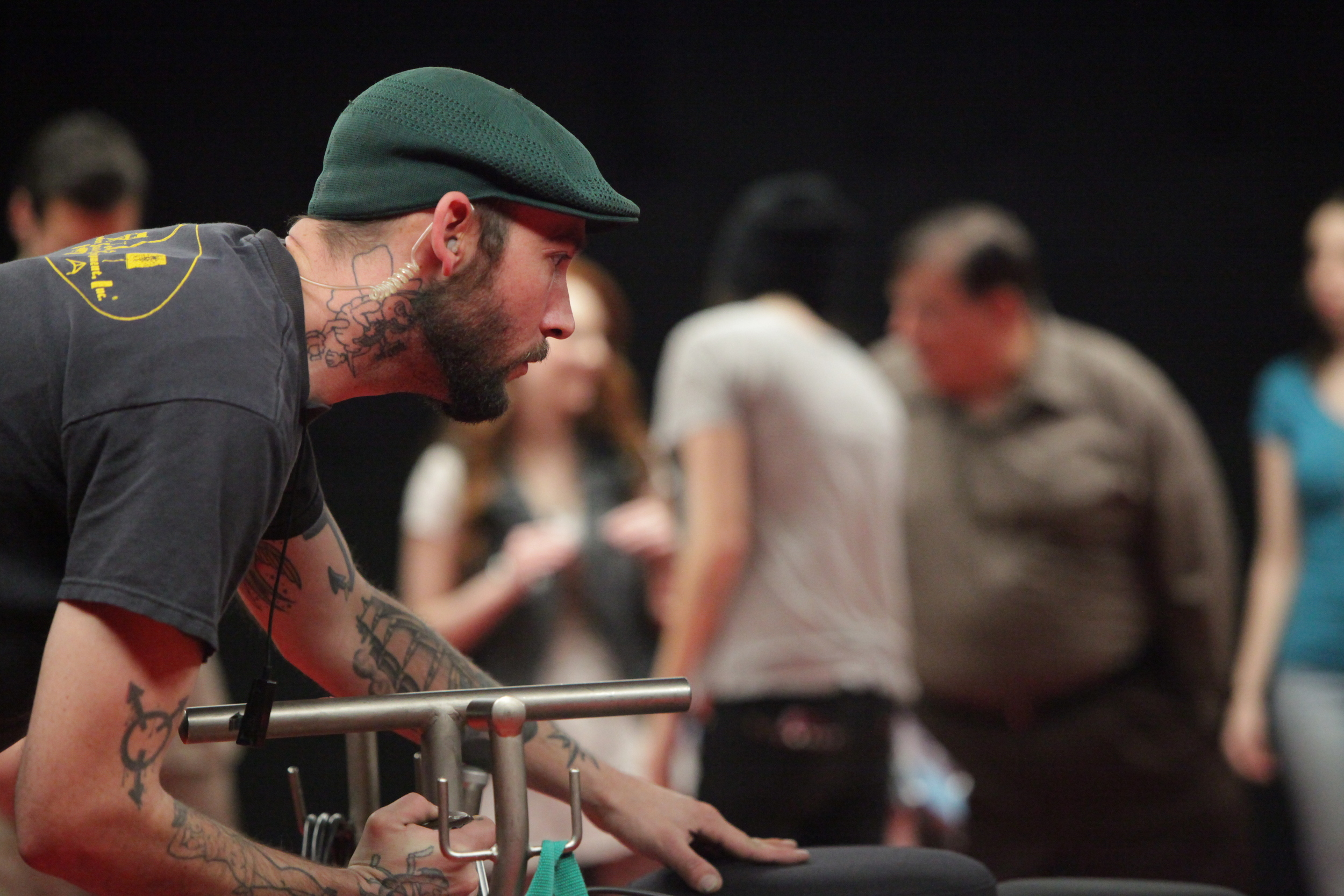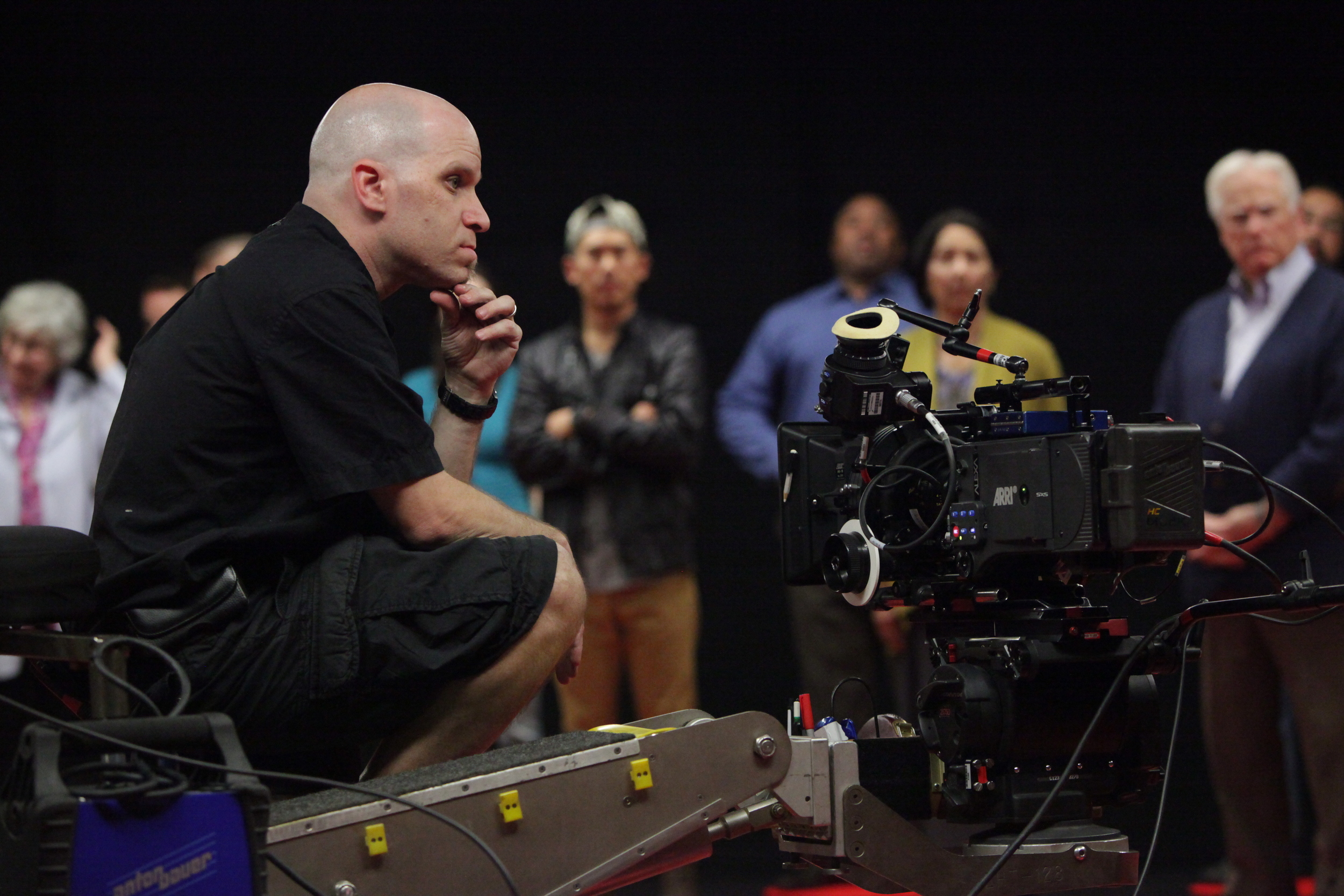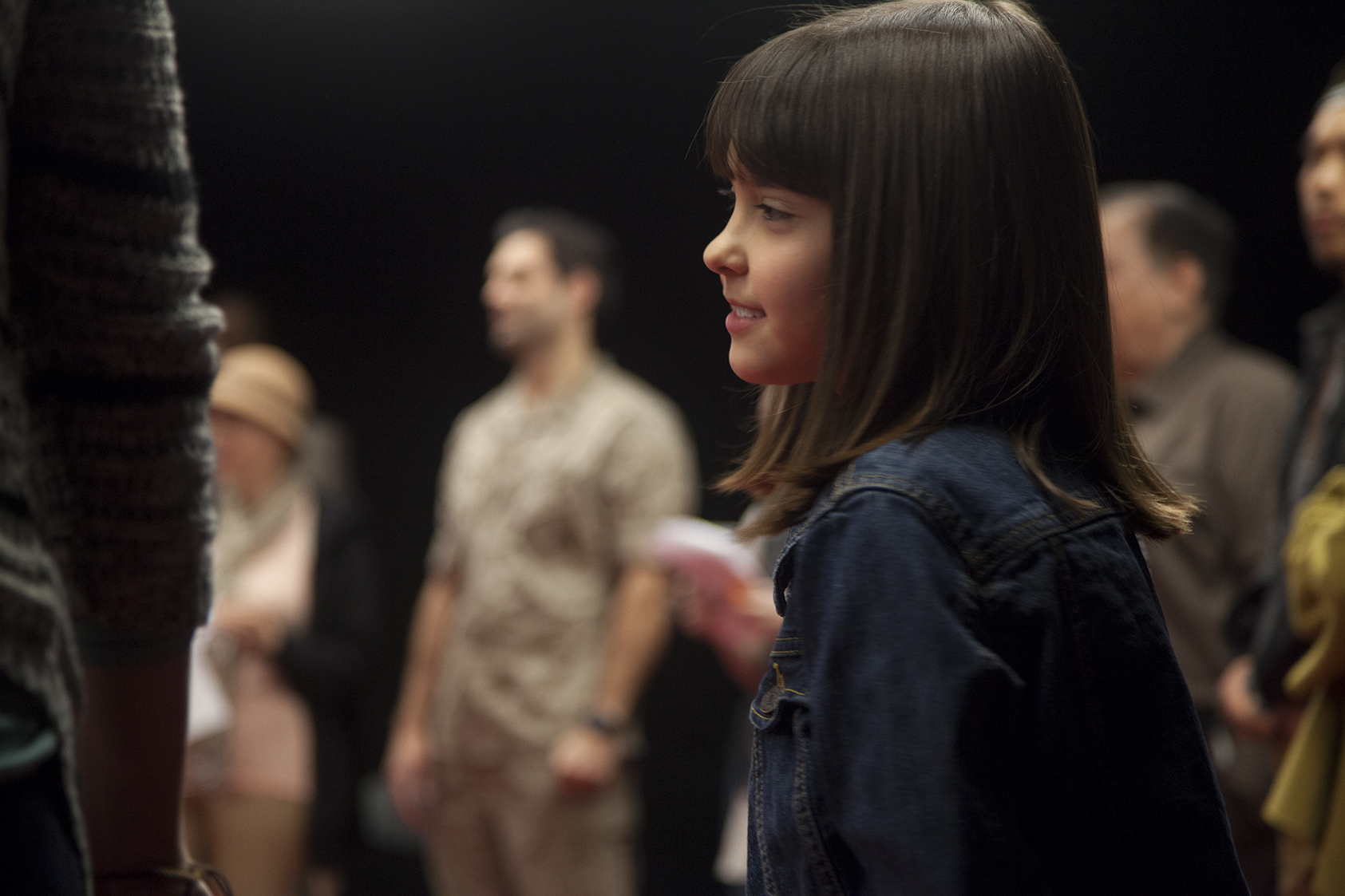THE PRODUCTION
Writers/Directors Mario Miscione and Aaron Hann have focused their careers on using simple settings to tell complex stories. CIRCLE was born as an evolution of their previous project, THE VAULT, a series that used a single set and nearly 100 actors to tell a compelling story of a reality game show gone wrong. For CIRCLE, the creators wanted to keep the single setting but use the characters in a new way. Unlike in THE VAULT, which confined the players to separate cells, the characters in CIRCLE would be face to face with one another. This would allow them to explore a key aspect of this new story: how people make difficult decisions when they have nothing to hide behind.
Because of the single set location, special care was taken to create an iconic look for the film. The two joined forces with Director of Photography Zoran Popovic to develop the film's style, anchored by a primary set-piece, a ring of lights that "floated" above the actors. This creation served form as well as function; in addition to its memorable visuals, it would be a permanent, consistent source of light for the cameras and could be raised and lowered as needed throughout production.
This "simple but striking" motto applied to every area; Production Designer Tom Lisowski developed a bold red floor design that the players use to cast their votes, as well as the ominous pitch-black "killing machine" in the center of the space.
Composer Justin Marshall Elias provided the film with its dark ambient score; a soundscape that oscillates between unnerving and melodic.
A warehouse in downtown Los Angeles served as the "mysterious chamber" within which the characters find themselves trapped. This large space allowed enough room to film from both inside and outside of the circle at a full 360 degrees. The film was shot chronologically over ten days in January of 2014, with the first day featuring all fifty actors on set at one time. This allowed the cast to begin as strangers, much like their characters, and the conflict and alliances of the script grew organically from there.
Another benefit of the 360 degree filming was that it allowed the actors to perform their parts as if on stage, often covering multiple scenes without cutting. Long, dynamic takes were used whenever possible, to highlight the performances. Production progressed quickly, with each day shooting out an average of 11 pages, a feat only possible with major preparation from every department.
Every step of the way, CIRCLE was an exercise in preparation and streamlining; an alternative to overblown, expensive film-making and an attempt to revisit core principles of storytelling - compelling characters, and engaging narrative and a unique visual language. Proof that, with the right people and passions, even the simplest of stories can be worth telling.


















